Category: Internal Security
INDIA STARTS SHARING MARITIME DATA
09, Oct 2019
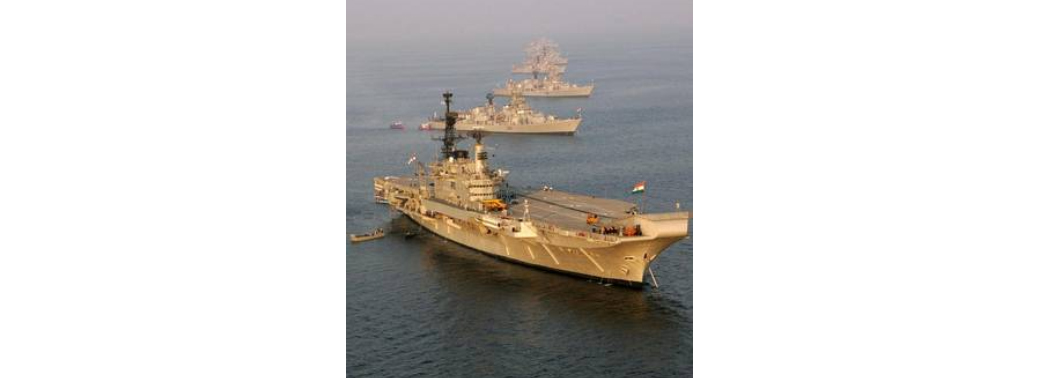
Why in News?
- The Information Fusion Centre – Indian Ocean Region (IFC-IOR) has started functioning as an information-sharing hub of maritime data.
Highlights:
- At the just-concluded Goa Maritime Conclave (GMC), National Security Adviser had offered countries in the IOR use of the facility to track movement of vessels on the high seas.
- The centre is actively interacting with the maritime community and has already built linkages with 18 countries and 15 multinational/maritime security centres.
IFC-IOR:
- The IFC-IOR was inaugurated in December 2018.
- The IFC is established at the Navy’s Information Management and Analysis Centre (IMAC) in Gurugram.It is the single point centre linking all the coastal radar chains to generate a seamless real-time picture of the nearly 7,500-km coastline.
- Through this Centre, information on “white shipping”, or commercial shipping, will be exchanged with countries in the region to improve maritime domain awareness in the Indian Ocean.It will function as an information-sharing hub of maritime data.
- It will be involved in cuing incident responses to maritime security situations through a collaborative approach.
- The IFC-IOR would also undertake the conduct of exercises and training capsules in maritime information collation and sharing.
Significance:
- It will help in countering the rise in maritime piracy in the Indian Ocean Region – a privileged location at the crossroads of global trade, connecting the major engines of the international economy in the Northern Atlantic and Asia-Pacific.
- IFC-IOR would work towards capability building in the region, coordination of incident response and disaster relief, and in time, also share submarine safety information.
- IFR-IRO would also ensure that the entire region is benefited by mutual collaboration and exchange of information and understanding the concerns and threats which are prevalent in the region.
WILL INDIA CHANGE ITS ‘NO FIRST USE’ POLICY?
01, Sep 2019

Why in News?
- Since conducting its second nuclear tests, Pokhran-II, in 1998, India has adhered to a self-imposed commitment to ‘No First Use’ (NFU) of nuclear weapons on another country. However, last week, on August 16, Defence Minister Rajnath Singh dropped a hint that in the future, India’s NFU promise “depends on circumstances.”
A Brief History of India’s N-Weapon Journey:
- India embarked on the path of nuclear weapons development after its face-off with China in the 1962 war, followed by China carrying out nuclear tests in 1964 and in the subsequent years.
- In 1974, under Prime Minister Indira Gandhi, India conducted its first nuclear tests, Pokhran-I, dubbed as a “peaceful nuclear explosion”.
- Despite more than two decades of international pressure that followed to make India abandon its pursuit of nuclear weapons, India again carried out a test in May 1998, Pokhran-II, involving a fission device, a low-yield device, and a thermonuclear device.
- Its successful execution meant that India had the ability to introduce nuclear warheads into its fast-developing missile programme.
- A fortnight after the Pokhran-II tests, Pakistan also carried out similar tests, confirming progress with its nuclear weapons programme; since that time its nuclear arsenal has expanded rapidly.
- In 1999, India came out with an explicit nuclear doctrine that committed, among other things, to NFU — that is it would never carry out a nuclear first-strike.
- This doctrine emphasised “minimal deterrence, no first use and non-use against non-nuclear weapon states”, in the words of former National Security Adviser Shivshankar Menon. The NFU promise thus went together with Credible Minimum Deterrence (CMD).
Credible Minimum Deterrence (CMD)- Indian Context:
- Credible minimum deterrence does not imply indefinite expansion of the nuclear arsenal; rather it is built on an assured second-strike capability.
- This implies that in the event of another nation carrying out a first nuclear strike of any magnitude against India, India’s nuclear forces shall be so deployed as to ensure survivability of the attack and the capability to carry out a massive, punitive nuclear retaliation aimed at inflicting damage that the aggressor will find “unacceptable”.
- Additionally, CMD requires a robust command and control system; effective intelligence and early warning capabilities; comprehensive planning and training for operations in line with the strategy; and the will to employ nuclear forces and weapons.
- Currently, the Nuclear Command Authority is responsible for command, control and operational decisions on nuclear weapons; specifically, it is the Cabinet Committee on Security and ultimately the office of the Prime Minister of India, that is responsible for the decision to carry out a nuclear attack.
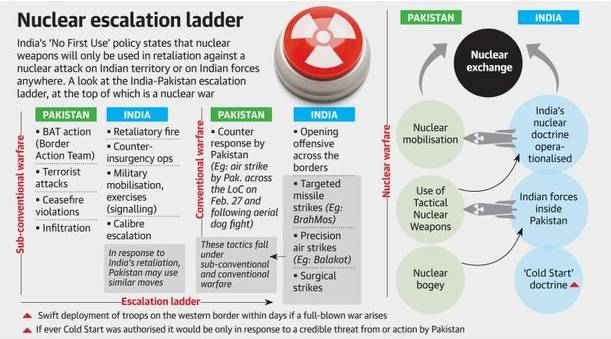
Why might the NFU Policy be Revisited?
- Regional geopolitical realities have a significant bearing upon India’s NFU commitment, to the extent that the CMD is what the “enemy” believes deterrence to be, and their belief is manifested in their actions.
- After the 1998 nuclear tests in India and Pakistan, the CMD was established in the sense that in the following decade, including the aftermaths of the attack on the Indian Parliament in 2001 and the Mumbai terror attacks in 2008, neither country felt inclined to instigate all-out war.
- However, since that time, the deterrent effect of India’s arsenal seemed to have less effect in one significant aspect: Pakistani officials started speaking out about their country’s development of tactical nuclear weapons, or “theatre nukes”, which had a lower yield but could still inflict enough damage to blunt a conventional attack.
- It is surmised that Pakistan’s talk of tactical nuclear weapons might have emerged as a counter to speculation that India might have developed the “Cold Start” doctrine. This is a purported classified plan for a conventional military attack by Indian forces on Pakistani soil, likely as a response to a prior sub-conventional attack from across the border (such as a state-sponsored terror-attack).
- In this context, in 2013, Shyam Saran, convener of the National Security Advisory Board, said: “India will not be the first to use nuclear weapons, but if it is attacked with such weapons, it would engage in nuclear retaliation which will be massive and designed to inflict unacceptable damage on its adversary. The label on a nuclear weapon used for attacking India, strategic or tactical, is irrelevant from the Indian perspective.”
- However, there may be some concerns with this idea that India will retaliate massively even if Pakistan uses tactical nuclear weapons — possibly on Indian forces operating on Pakistani soil — against it.
- First, this strategy would take both countries back into the old-world deterrence paradigm of “mutually assured destruction”, because any surviving forces in Pakistan after India’s retaliation would surely launch a devastating attack against targets across India.
- Second, India may have more to gain by pre-emptive action. This is the question that analysts Christopher Clary and Vipin Narang have studied, and they argue that one option under consideration could be for “a hard counterforce strike against Pakistan’s relatively small number — perhaps several dozen — strategic nuclear assets on land (and eventually at sea) to eliminate its ability to destroy Indian strategic targets and cities. Such a strategy would be consistent with India’s doctrine of massive retaliation — massive retaliation strategies need not be countervalue — while avoiding the credibility issues associated with a countervalue targeting strategy following Pakistan’s use of nuclear weapons on the battlefield.”
India’s Nuclear Doctrine- Accommodating Changing Realities:
- Mr. Clary and Mr. Narang argue, India’s adoption of potentially pre-emptive “counterforce options” – i.e. to eliminate Pakistan’s strategic nuclear weapons when it deems the risk of a Pakistani first-strike to have crossed a critical threshold — may require no explicit shifts in its declared nuclear doctrine.
- Remaining silent on this subject might be calculated as a strategic advantage for India as the country would be assuming deliberate nuclear ambiguity.
- The downside is that New Delhi remaining silent on this, except for occasional hints — such as what the Defence Minister tweeted recently — might compel Pakistan to adjust its nuclear posture accordingly, based on a calculation that India might be willing to carry out a counterforce attack and thereby eliminate the Pakistani nuclear threat entirely. This in turn risks fuelling an arms race or more unstable nuclear weapons deployment patterns in Pakistan.
- The Balakot strikes that followed the Pulwama attack (both in February 2019) demonstrate that the Narendra Modi government is not shy of taking cross-border military action.
- If another sub-conventional attack, say a terror attack, occurs on Indian soil anytime soon, these theories will likely be tested. What remains unclear is how high up the escalation ladder both countries will be willing to go.
INFORMATION FUSION CENTRE – INDIAN OCEAN REGION (IFC-IOR)
24, Aug 2019

Why in News?
- The NMDA project was launched in accordance with the vision of PM on SAGAR (Security and Growth for All in the Region).
IFC- IOR:
- The IFC-IOR was established with the vision of strengthening maritime security in the region and beyond, by building a common coherent maritime situation picture and acting as a maritime information hub for the region.
- Through this Centre, information on “white shipping”, or commercial shipping, will be exchanged with countries in the region to improve maritime domain awareness in the Indian Ocean.
- The IFC has been established at the Navy’s Information Management and Analysis Centre (IMAC) in Gurugram, which is the single point centre linking all the coastal radar chains to generate a seamless real-time picture of the nearly 7,500-km coastline.
- IFR-IRO would also ensure that the entire region is benefited by mutual collaboration and exchange of information and understanding the concerns and threats which are prevalent in the region.
ARMY GETS DHANUSH ARTILLERY GUNS
09, Apr 2019
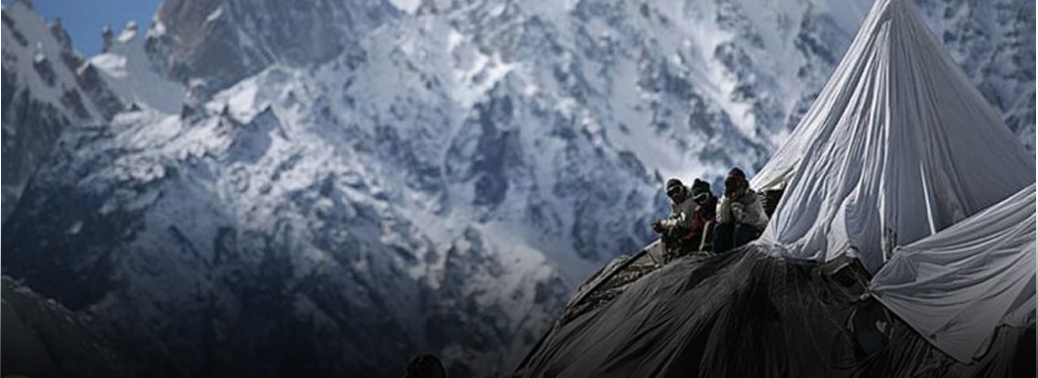
Why in News?
- The Ordnance Factory Board (OFB) handed over the first batch of six Dhanush artillery guns to the
Highlights:
- Dhanush is the indigenously upgraded gun of the Swedish Bofors gun procured in the 1980s. Dhanush is a 155 mm, 45-calibre towed artillery gun with a range of 36 km and has demonstrated a range of 38 km with specialised
- It is an upgrade of the existing 155m, 39 calibre Bofors FH 77
- In army parlance, it is classified as ‘medium artillery’.
- It is compatible with all North Atlantic Treaty Organisation (NATO) 155 mm ammunition system. The gun is fitted with inertial navigation system with global positioning system- (GPS) based gun recording and auto-laying, an enhanced tactical computer for onboard ballistic computations, an onboard muzzle velocity recording, an automated gun sighting system equipped with camera, thermal imaging and laser range
- Indigenisation to the extent of about 81%, has already been By the end of 2019,the indigenisation level of the gun will go up to 91%,” the Defence Ministry said in a statement. It is one of the “Make in India” marvels.
IRANIAN DRUG SMUGGLERS NABBED IN OPERATION OFF GUJARAT COAST
28, Mar 2019

- Iranian nationals who were smuggling heroin were nabbed in a sensational mid-sea operation jointly conducted by the Indian Coast Guard (ICG) and Gujarat’s Anti-Terrorist Squad (ATS) off the Gujarat coast. Their boat was intercepted by the Indian agencies off Porbandar Coast in the Arabian Sea and 100 kg of heroine worth around Rs. 500 crores were recovered was sent by a Pakistani national Hamid Malek.
- It was loaded off the Gwadar port of Pakistan.
Golden Triangle (Southeast Asia)
- One of Asia’s two main opium-producing areas.
- It is an area of around 950,000 square kilometres (367,000 sq mi) that overlaps the mountains of three countries of Southeast Asia: Myanmar, Laos and Thailand.
- Most of the world’s heroin came from the Golden Triangle until the early 21st century when Afghanistan became the world’s largest producer.
- The Golden Triangle designates the confluence of the Ruak River and the Mekong River, since the term has been
- appropriated by the Thai tourist industry to describe the nearby border tripoint of Thailand, Laos and Myanmar.
Golden Crescent
- The Golden Crescent is the name given to one of Asia’s two principal areas of illicit opium production (with the other being the Golden Triangle), located at the crossroads of Central, South, and Western Asia.
- This space overlaps three nations, Afghanistan, Iran, and Pakistan, whose mountainous peripheries define the crescent.
Anti – Terrorist Squard:
- The Anti-Terrorism Squad (ATS) is a special police force in several states of India including Maharashtra, Gujarat, Kerala, Uttar Pradesh, Rajasthan and Bihar.
- ATS was founded in Maharashtra in 1990 by then Additional Commissioner of Mumbai Police Aftab Ahmed Khan popularly known as A.A. Khan.
- He was inspired by the Los Angeles Police Department’s Special Weapons & Tactics (SWAT) teams methods to combat modern-day terrorism. Since its formation in 1990, ATS’s officers have won 23 gallantry awards. The Mumbai ATS was involved in the 26 November 2008 hostage rescue operations in multiple locations in Mumbai, Maharashtra including the 5 star hotels Taj and Oberoi Trident. After the attacks, it also started appointing children (ages above 12) as officers of ATC, particularly in Mumbai, which were given training as undercover.
IN 2018, OFFICIAL SECRETS ACT INVOKED IN 5 CASES
28, Mar 2019
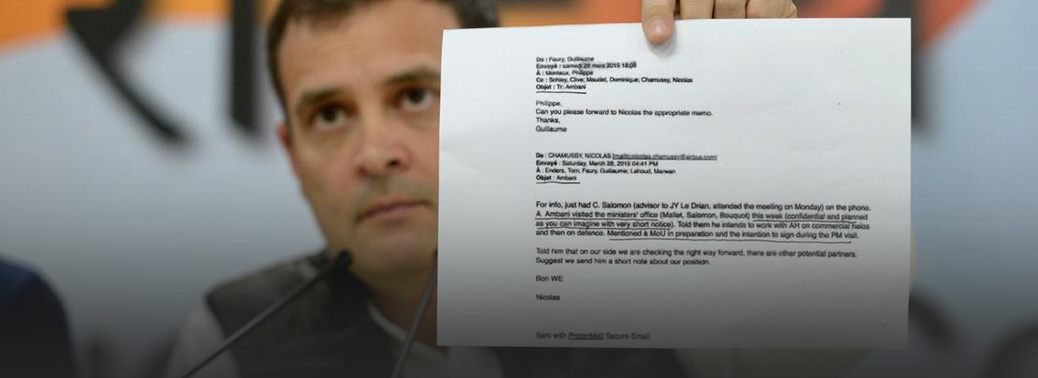
- The Ministry of Home Affairs (MHA) issued five prosecution sanction orders last year under the Official Secrets Act (OSA), 1923.
Official Secrets Act:
- It is India’s anti espionage (Spy” and “Secret agent”) act enacted in 1923 during the British Rule. It states clearly that any action which involves helping an enemy state against India is illegal. It also states that one cannot approach, inspect, or even pass over a prohibited government site or area.
- According to this Act, helping the enemy state can be in the form of communicating a sketch, plan, model of an official secret, or of official codes or passwords, to the enemy.
- The disclosure of any information that is likely to affect the sovereignty and integrity of India, the security of the State, or friendly relations with foreign States, is punishable by this act.
- Punishments under the Act range from three to fourteen years imprisonment. A person prosecuted under this Act can be charged with the crime even if the action was unintentional and not intended to endanger the security of the state. The Act only empowers persons in positions of authority to handle official secrets, and others who handle it in prohibited areas or outside them are liable for punishment.
Conflict with the RTI Act:
- In Clause 6 of the Official Secrets Act, information from any governmental office is considered official information, hence it can be used to override Right to Information Act 2005 requests. This has drawn harsh criticism.
55% INTERNET USERS SCARED OF AIRING POLITICAL VIEWS:
26, Mar 2019

- 55% of sampled English Internet users were concerned that expressing their political views online could get them into trouble with the authorities, an India digital report prepared by the Reuters Institute showed.
The Past Incidents:
- These high levels of concern could be based in part on recent events in India.
- Since 2012 at least 17 people have been arrested for posting material that was considered offensive or threatening to a politician.
Role of Social Media:
- As many as 68% of those surveyed identified smart phones as their main device for online news with 52% stating that they got their news from Facebook.
- WhatsApp (52%), Instagram (26%), Twitter (18%), and Facebook Messenger (16%) were the other sources of news.
- Online news generally (56%), and social media specifically (28%) have outpaced print (16%) as the main source of news among respondents under 35, whereas respondents over 25 still mix online and offline media to a greater extent.
- The fact that our survey covers only English speakers with Internet access is key here; the number of people accessing news via print and television will be higher for regional language news consumer though as mobile web use spreads we expect to see this change in the years ahead.
- Respondents overall had low trust in news overall (36%) but expressed higher levels of trust in news search (45%) and social media (34%). As many as 57% of those surveyed were worried whether the news they consumed was fake or real.
Impact of Social Media in Elections:
- The year 2019 is a completely different animal in comparison to 2014. Social media has exploded since that time in India, spreading its roots through to rural India. It is not just benefiting the businesses, but has also proved to be a great platform for persuading and changing the mindset of a wider population.
Increase in the number of mobile phones:
- Currently, India has about 1.2 Billion mobile phones, up from approximately 581 million in 2014. At this pace, we would have more mobile phones that the population of India by the time the elections begin.
Data becoming cheap:
- With the entry of players like JIO, data has become extremely cheap. For less than Rs. 10/- you have 2 GB of data every day.
Penetration into Rural India:
- As a result of this mobile revolution, mobile phones and cheap data have reached rural India as well. With a density of about
- 94/100 users of a phone, it is quite evident that almost everyone has a mobile phone available to them.
The growth of Social Media
- Though the internet was marketed as a way to share ideas and knowledge, it turned out
- to be used primarily for the internet. Social media including WhatsApp has growth by 100% in rural India.
Fake News
A lie repeated many times becomes the truth
- 90% of Smartphone users have WhatsApp
- Propagation of information becomes way easier and cheaper than before. With multiple languages supported by these companies, language barriers do not exist anymore.
Demographic Dividend
- The older one becomes, the tougher it is to change one’s allegiance towards a political party. The youth usually switches their stance based on the information that is received. The highest growth in social media consumption has been in this category. Hence the political parties use this demographic to their advantage.
High Unemployment/Underemployment
- It is very easy to target this segment and brainwash accordingly which again is present on these platforms and wastes the maximum amount of time online.
Expensive IT cells
Disinformation is everywhere in India
25, Mar 2019
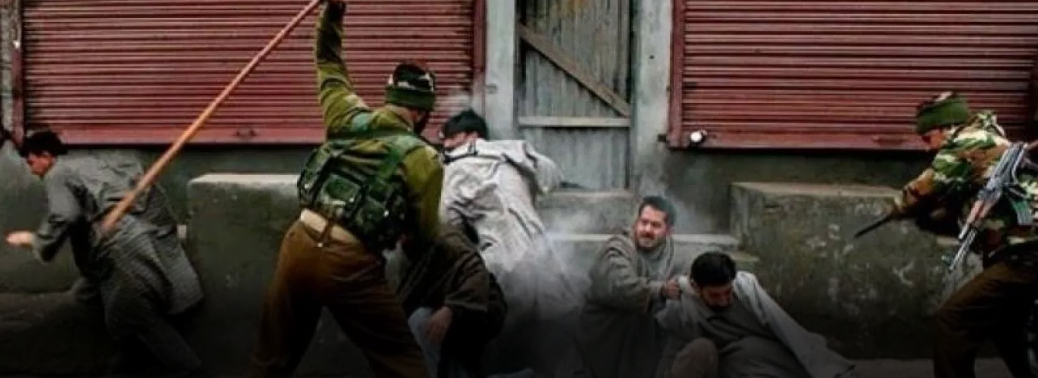
With the Lok Sabha elections coming up, it is critically important that Indians have access to credible and trustworthy information before they vote. The problem is that many do not feel they do. In a brand new survey of English-language Internet users in India conducted by the University of Oxford, have found that a majority of the respondents are concerned with whether the news they come across online is real or fake.
What is fake news?
Fake news is a type of yellow journalism that consists of deliberate misinformation or hoaxes spread via the traditional print, broadcasting news media, or via Internet-based social media. Fake news is written and published with the intent to mislead in order to gain financially or politically, often with sensationalist, exaggerated, or patently false headlines that grab attention.
Driving force behind fake news:
- Getting easy viewership through sensational news-e.g. dubbing foreign prisoners as spies or terrorists without any proof
- Directed towards a particular organization or person with an intention to either glorify it or to bring malice.eg. a news channel was established to defend the accused in Jessica Lal murder case.
Risks of fake news:
Political: Swaying or polarising public opinion. Example Recent American election, UP elections where certain facts are quoted out of context/partially. Significant impact on the nature of polity.
Religious: Promoting religious ideologies. Glorifying one religion while despising others Ex. Right wing violence meted out by Gaurakshaks leads to religious polarisation and communal unrests.
Criminal: Sensationalising crimes by blowing them out of proportion. Misleads people rather than making them aware. Instils irrational fears.
Fake news has also been used to dupe gullible people financially. The reach of news has given chit fund schemes an altogether new arena as well as has introduced the concept of online fraud through spam mails.
It hampers spirit of common brotherhood and raises intolerance. Eg. 2012 mass exodus of North-Eastern people from Bangalore on false online threats.
Over the time it shapes the thinking of society at large. Portrayal of India as an unsafe destination for women by international media has created a false image of a nation.
The Solution:
- Independent, trusted and effective press regulation.
- Mainstream media must use social media toolsintensively in order to defend the truth, present the correct information and balance opinions.
- Curb media ownership. We need an open debate on the impact of media concentration on our democracy and wider culture. There should be clear limits on media ownership so that powerful proprietors with vested interests are not allowed to dominate the news agenda.
- Define fake news legally. Heavy punitive measures for whosoever violates the said definition.
- There should be grievance redressal mechanisms and arbitration spaces to resolve issues.
- Digital media literacy among people to increase scrutiny and feedbacks of the content.
- Technical solutions that assess the credibility of information circulating online are also needed.
Smart Fence
07, Mar 2019
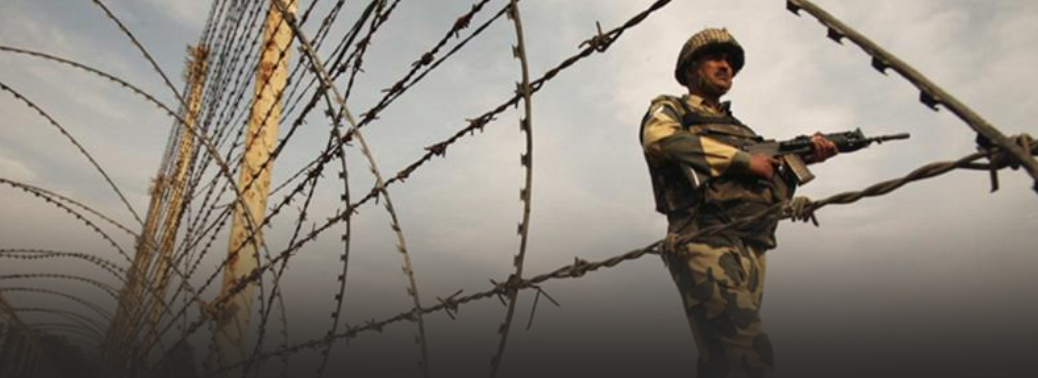
Context
- Assam shares a 263 km border with Bangladesh. Much of the border was fenced, but a 61 km stretch in Dhubri district remained open owing to the terrain dictated by the Brahmaputra. This stretch is where the vast Brahmaputra and its numerous channels with chars (sandbars) in between flow into Bangladesh. Infiltrators, cattle smugglers and others invariably took advantage of the difficulty in keeping vigil along this stretch, even on speedboats.
Difference between Barbed Fencing, Smart Fence & Comprehensive Integrated Border Management System:
- Barbed Fence – Refers to the securing of the border with physical fences that obstruct infiltration. Smart Fence – The smart fences have an addition of electronic systems to the barbed wire, which helps in detecting movement along the border.
- CIBMS – Lastly, when one cannot have a physical border security system due to the geographical reason, CIBMS is being used. CIBMS uses technology driven by sensors to detect any form of movement in the water, on the land surface and in the air.
About the Current Fence:
- Current Fence Comprises of microwave communication, optical fibre cables, cameras, and an intrusion detection device, this system is called BOLD-QIT (Border Electronically Dominated QRT Interception Technique) and was established under the Comprehensive Integrated Border Management System.
THE CENTRAL EDUCATIONAL INSTITUTIONS (RESERVATION IN TEACHERS’ CADRE) ORDINANCE, 2019
06, Mar 2019

- The Union Cabinet approved a proposal for promulgation of The Central Educational Institutions (Reservation in Teachers’ Cadre) Ordinance, 2019 to restore the earlier 200-point roster-based reservation system in Higher Education Institutions (HEIs).
About:
- The Cabinet has approved proposal for promulgation of The Central Educational Institutions (Reservation in Teachers’ Cadre) Ordinance, 2019 to provide for the reservation of faculty in appointments by direct recruitment of persons belonging to Scheduled Castes (SC), Scheduled Tribes (ST) and Socially and Educationally Backward Classes (SEBL) in central educational institutions and for matters connected there with.
- The new system will consider the university or college as one unit, instead of treating department or subject as one unit. The ordinance will ensure that constitutional provisions of reservation for SC, ST and SEBL in the faculty recruitment will be protected and current impasse in recruitment would be resolved. The decision will also now pave the way for filling up of more than 5,000 vacancies by direct recruitment in teachers’ cadre.
Background:
- There has been agitation urging the government to bring an ordinance to restore the 200-point roster taking college or university as a unit for reservation in teaching posts.
- The University Grants Commission (UGC) had announced last March that an individual department should be considered as the base unit to calculate the number of teaching posts to be reserved for the SC and ST candidates, following an order by the Allahabad High Court in April 2017. The Supreme Court had last month dismissed a review petition filed by the HRD Ministry after its special leave petition against the court order was rejected by the apex court.
BOLD-QIT PROJECT
06, Mar 2019

- Union Home Minister Rajnath Singh inaugurated a 61-km long smart fencing Called BOLD-QIT between India and Bangladesh in Assam’s Dhubri district.
About:
- BOLD-QIT (Border Electronically Dominated QRT Interception Technique), is the third smart fence project launched under the Comprehensive Integrated Border Management System (CIBMS) after two similar projects covering a 10-km stretch on the India-Pakistan border were inaugurated last year.
- CIBMS involves deployment of a range of state-of-the-art surveillance technologies thermal imagers, infra-red and laser-based intruder alarms, aerostats for aerial surveillance, unattended ground sensors that can help detect intrusion bids, radars, sonar systems to secure riverine borders, fibre-optic sensors and a command and control system that receives data from all surveillance devices in real time.
- In September 2018, two pilot projects of ‘smart’ border fencing built under the CIBMS programme were operationalised in Jammu.
- CIBMS implementation of the project will help in integration of manpower, sensors, networks, intelligence and command and control solutions to improve situational awareness at different levels of the hierarchy in order to facilitate prompt and informed decision-making and quick reaction to emerging situations.
- The BOLD-QIT project in Dhubri has been implemented along a riverine border and its fencing was a challenge. The entire India-Bangladesh border would gradually be fenced using smart technology.
- The 61-km border stretch where the river Brahmaputra enters Bangladesh includes vast ‘char’ lands and innumerable river channels, making security here an arduous task, especially during rainy season. Pointing out that the implementation of the projects on both India-Pakistan and India-Bangladesh borders will enhance the capabilities of the Border Security Force (BSF). Stage-I of the pilot project has been completed in Jammu and Kashmir and Assam, it will be reviewed by the IIT Delhi as an independent third-party auditor.Stages-II and III of the projects will target riverine, delta and estuary areas, waterlogged and swampy areas, creeks, plains vulnerable to heavy fog, thickly populated areas, hills, tropical jungles and deserts.
Aerial Surveillance System
25, Feb 2019
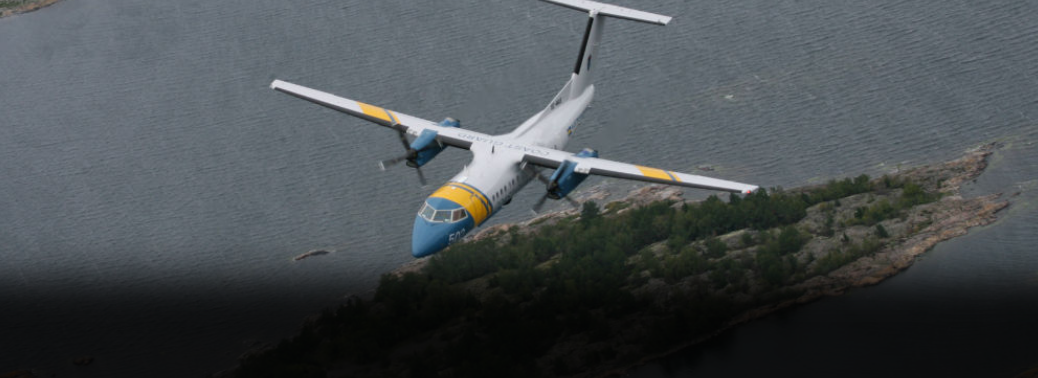
- The hyper spectral imagery programme, a first for the country, seeks to locate and identify suspicious movements and is expected to be operational in the next two years.
About:
- The Indian Air Force (IAF) has commissioned the development of an aerial surveillance system for monitoring suspicious movements under dense foliage cover along the international border and some parts within the country.
- The programme would mean is that the data gathered from aerial sources would be processed within minutes, and researchers would be able to tell security forces on the ground of “unwanted” human presence in the area, their numbers and locations, among other inputs.
- The IAF is spending Rs. 13 crores for the programme in which human resources from premier research and education institutions across the country are being put together, and has roped in a senior researcher and lead technologist of Indian origin from the National Aeronautics and Space Administration (NASA) as the chief technologist for the programme.
- “For the first time, IAF will be having multi-sensor data fusion that will help identify an adversary. It has a mandate to change the way we fight the war. The IAF is willing to wait for a couple of years to reap the benefits. Some agencies in India tried to work on the technology, but have not succeeded.
- This is a unique patent application, which will help identify the presence of a human below trees, dense foliage, shrubs or inside a structure, whether it is day or night. It can detect human presence from air even if there a cloud cover, dense fog or snow cover.
- Data/images will be captured through optical and infra-red sensors — to be most likely mounted on an unmanned aerial vehicle — and processed through deep learning algorithms.
- The methods are in place while they were working on handling data and tuning up the algorithm.
India to have own DNS for safe Browsing
23, Feb 2019

In News:
- The government will soon roll out a public Domain Name Server, or DNS, for India aimed at providing a faster and more secure browsing experience for Internet users in the country, while ensuring that citizens’ data is stored locally.
Explained:
What is DNS?
- The Domain Name Systems (DNS) is the phonebook of the Internet. Humans access information online through domain names, like nytimes.com or espn.com. Web browsers interact through Internet Protocol (IP) addresses. DNS translates domain names to IP addresses so browsers can load Internet resources.
- Each device connected to the Internet has a unique IP address which other machines use to find the device. DNS servers eliminate the need for humans to memorize IP addresses such as 192.168.1.1 (in IPv4), or more complex newer alphanumeric IP addresses such as 2400:cb00:2048:1::c629:d7a2 (in IPv6).
Importance of own DNS?
- If the DNS is either slow or fails to work, users will not be able to locate web addresses. The main aim of bringing our own public DNS is to ensure availability, particularly for smaller Internet Service Providers (ISPs) who don’t have credible DNS. Bigger ones usually have their own DNS
- Pointing out that there were other open DNS servers, including Google Public DNS, the government’s system would prevent users from visiting malicious websites.
- The roll-out, which will be executed by the National Informatics Centre – the technology arm of the government – will be completed in the next four to six months
- NIC is already using the public DNS within the government network.
- If you use any public DNS, they access and use all your data. It is not that users will compulsorily need to shift to India public DNS. A user is free to choose any DNS,” the official said, adding that with the government’s public DNS, Indian users’ data would be stored within the country
Is It State Sponsored Monitoring?
- No, need, if the government wants to block a website, we have a mechanism in place. We can send a list to the ISPs for reasons such as child porn or fake news, and they have to comply with the order.
- The ministry, as part of its ongoing awareness campaign for safer Internet, also plans to reach out to end-users to educate them on DNS and how they could shift to an Indian public DNS if they desired.
AFSPA – Assam Rifles
22, Feb 2019
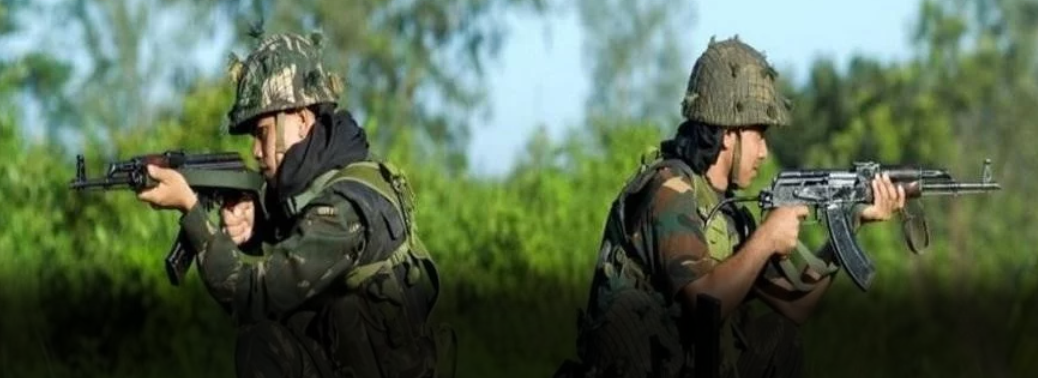
- Assam Rifles personnel have been empowered by the central government to arrest anyone and search a place without a warrant in north-eastern states of Assam, Arunachal Pradesh, Manipur, Nagaland, and Mizoram.
About:
- The Centre granted paramilitary force Assam Rifles the power to arrest anyone and search a place without warrant in border districts in five north-eastern states.
- An officer of the rank corresponding to that of the lowest rank of members of the Assam Rifles has been given these powers under the Code of Criminal Procedure (CrPC) stated a notification issued by the Home Ministry.
- The Assam Rifles conducts counter-insurgency operations in the North East and guards the India-Myanmar border. At present, there are 46 battalions of Assam Rifles with a sanctioned strength of 63747 personnel. The paramilitary force is under the control of the Ministry of Home Affairs.
- The powers granted are akin to the provisions of the Armed Forces (Special Powers) Act, which is effective in several parts of the North East. The new powers are effective in the border areas of Assam, Arunachal Pradesh, Manipur, Nagaland and Mizoram.
- The notification from the Ministry of Home Affairs states that an “officer of the rank corresponding to that of the lowest rank of members of the Assam Rifles” will have these powers.
- The Assam Rifles earlier was making arrests only in areas where the Armed Forces (Special Powers) Act was in effect.
- They were finding it difficult to make seizures and arrest in Mizoram, which doesn’t have AFSPA. This is to basically correct that anomaly. As per law, they have to hand over the suspects to the local police within 24 hours.
- Section 41 of the CrPC states that any police officer may, without an order from a magistrate and without a warrant, arrest any person. Section 47 gives powers for search of place entered by person sought to be arrested.
- Section 48 says a police officer may, for the purpose of arresting without warrant any person whom he is authorised to arrest, pursue such person into any place in India. According to Section 49, the person arrested shall not be subjected to more restraint than is necessary to prevent his escape.
- The Armed Forces (Special Powers) Act, which is operational in some parts of the Northeast, also gives similar powers to the Army operating in the region.
AFSPA:
- The Armed Forces (Special Powers) Act, 1958 gives armed forces the power to maintain public order in “disturbed areas”
- They have the authority to prohibit a gathering of five or more persons in an area, can use force or even open fire after giving a due warning if they feel a person is in contravention of the law
- If reasonable suspicion exists, the army can also arrest a person without a warrant; enter or search a premise without a warrant; and ban the possession of firearms
- As per Section 3 of the AFSPA, it can be invoked in places “where the use of armed forces in aid of the civil power is necessary”
What is a “disturbed area” and who has the power to declare it?
- A disturbed area is one which is declared by notification under Section 3 of the AFSPA An area can be disturbed due to differences or disputes between members of different religious, racial, language or regional groups or castes or communities
- The Central Government or the Governor of the State or administrator of the Union Territory can declare the whole or part of the State or Union Territory as a disturbed area
Which States are under this Act?
- It is effective in the whole of Nagaland, Assam, Manipur (excluding seven assembly constituencies of Imphal) and parts of Arunachal Pradesh Jammu and Kashmir too has a similar Act
Report on AQIS
25, Jan 2019

Details:
- ‘Study by New York-based think tank misleading’A top intelligence official on Thursday dismissed as ‘alarmist’ a U.S.-based think tank’s report that contends that the Al Qaeda in the Indian Subcontinent (AQIS) was exploiting the growing incidents of violence against Muslims in India and attacks in the name of “cow vigilantism” to recruit cadres.
- Asserting that the study by The Soufan Center, a New York-based think tank, was misleading, the official who spoke on the condition of anonymity said: “researchers appear to have extrapolated isolated instances, imaginatively.”
- The report titled ‘AQIS — The Nucleus of Jihad in South Asia’ asserts that the rise in inter-religious clashes in India due to a changing political discourse had resulted in further divisions between Hindus and Muslims. Increasing incidents of violent attacks on Muslims in India, who are accused of eating beef, was being exploited by groups like AQIS to “incite Indian Muslims to join what is being called a fight for their honour,” according to the study’s authors.
- “India is a pluralist country with 180 million Muslims,” the intelligence official said. “Indian Islam is based on rich Sufistic traditions of pluralism, inclusivism and composite nationalism. The wave of Al Qaeda in the 1990s and 2000s did not impacts the Indian Muslim. The wave of Islamic State had minimal impact, with only about 108 individuals succumbing to its lure. In the past few decades, global Islamist uprisings and terrorism have not impacted the Indian Muslim, as they were based on Jihadism, born out of exclusionism,” the official added, dismissing the report’s premise on the increasing vulnerability of the Indian Muslim to recruitment by the AQIS.
- The Soufan Center also said in its report that there was strong evidence of ties between the AQIS and the LeT. According to the report, AQIS operative Abdul Rehman, who was arrested from Orissa in 2015, travelled to Pakistan in 2014 as a LeT recruit.
- “ISI facilitated his entry into Karachi via Dubai, but once inside Pakistan, Rahman met with several high-ranking AQIS leaders, including its chief, Asim Umar. Through his LeT contacts, Rehman later joined AQIS. The indictment documents of Abdul Rahman reveal that numerous LeT leaders visited AQIS headquarters in South Waziristan including Sajid Majid, ISI operative who masterminded the 26/11 Mumbai attacks,” it said.
- The think tank said the situation in Kashmir had also taken an “unprecedented turn.” “For the first time since the onset of conflict in Kashmir, the region is responding to the appeal of groups like al-Qaeda.”
AFSPA to continue in Nagaland
01, Jan 2019
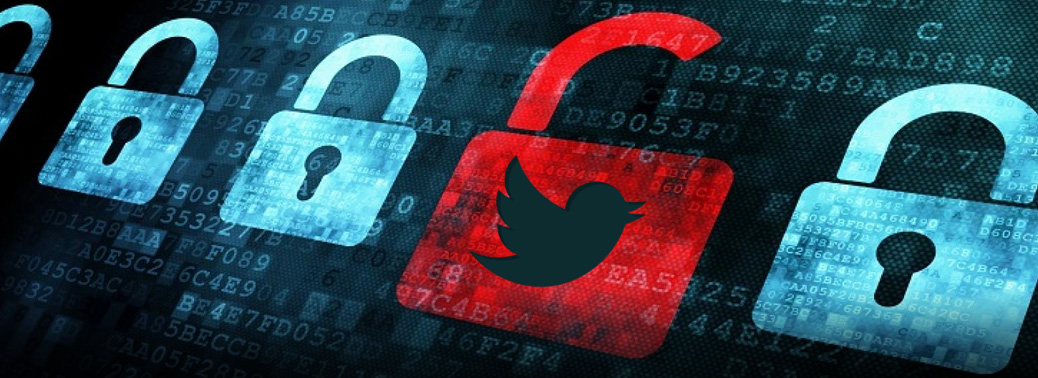
Context:
- The entire State of Nagaland has been declared ‘disturbed area’ for six more months, till June-end, under the Armed Forces (Special Powers) Act 1976.
Details:
- The Home Ministry has notified that the Central government is of the opinion that the area comprising the whole of State of Nagaland is in such a disturbed and dangerous condition that the use of armed forces in aid of civilian power is necessary.
- The Ministry further mentioned that decision has been taken as killings, loot and extortion have been going on in various parts of the State which necessitated the action.
- Hence, using the powers conferred by Section 3 of the Armed Forces (Special Powers) Act, 1958, the Central government declared the whole of the State of Nagaland as a ‘disturbed area’ for a period of six months with effect from 30th December, 2018.
- The AFSPA has been in force in Nagaland for several decades. It has not been withdrawn even after a framework agreement was signed on August 3, 2015, by the Naga insurgent group NSCN-IM general secretary and government interlocutor R.N. Ravi in the presence of Prime Minister.
- There are also demands from various organisations in the North East and Jammu and Kashmir for repealing the controversial AFSPA, which empowers these forces with ‘sweeping powers’ such as to conduct operations anywhere and arrest anyone without any prior notice.
About AFSPA:

How a region is declared ‘disturbed’?
- Section (3) of the AFSPA empowers the governor of the state or Union territory to issue an official notification in The Gazette of India, following which the Centre has the authority to send in armed forces for civilian aid.
- Once declared ‘disturbed’, the region has to maintain status quo for a minimum of three months, according to The Disturbed Areas (Special Courts) Act, 1976.
- The state governments can suggest whether the act is required to be enforced or not. But under Section (3) of the act, their opinion can be overruled by the governor or the Centre. The Armed Forces Special Power Act 1958 provides security forces special powers and immunity to tackle militant, extremist and insurgent activities in disturbed areas.
- Many reports have shown that frequent raids, fake encounters, demolition of private property and torture by the armed force made the lives of people living in the disturbed areas vulnerable.
Implications of these violations:
- Violation of fundamental rights such as Article 14, 21 guaranteed by the constitution. Abuses by army, and are rarely punished for crimes
- It alienates the people from army and then from the rest of the India. A feeling of other worldly is generated in their mind. It is also one of the main reasons for self-exclusion of J&K and North-eastern people from the rest of India
- The special powers by AFSPA also override the code of criminal procedure (CrPC)
- It is agreed that handling insurgent and extremist activities in disturbed areas need special powers and these special powers are also to preserve country’s integrity and uphold law and order. However, the nature and mechanism of AFSPA should be the way to address the concerns of human rights violations
Solutions:
- Phased removal of AFSPA considering the local situations.
- All human right violations should be investigated and time-bound procedure should be adopted
- The cases could also be fast-tracked
- Amendments in Laws: The lacunae in the Act, as a result of definitional voids with respect to terms like “disturbed”, “dangerous” and “land forces” need to be amplified to ensure greater clarity
- The onus of proving the alleged person as terrorists should lie with the forces. Sec 7 should be suitable amended to this effect.
- AFSPA should only be a curative, preventive and protective force and not a violative force. Steps should be made in that regard.
National Police Memorial
27, Oct 2018
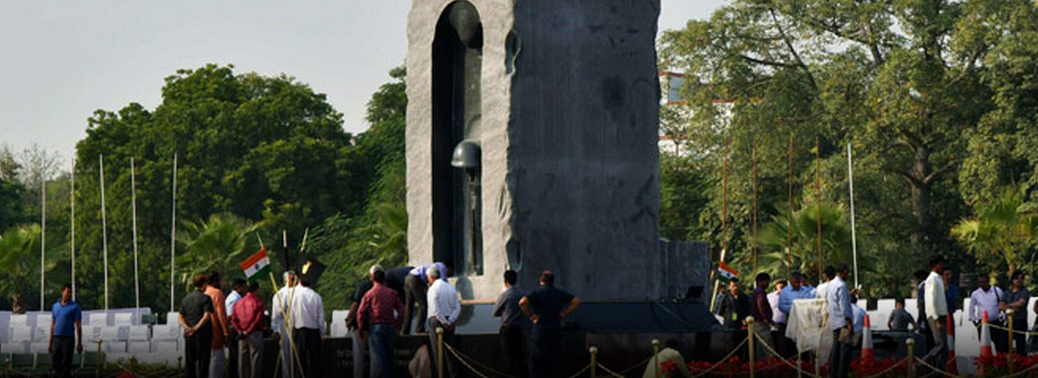
In news:
- PM to unveil National Police Memorial, 34,864 personnel have been killed in action Since 1947
- The memorial is in recognition of the sacrifice made by nearly 35,000 police personnel killed in action since Independence.
Background:
- A 30foot granite pillar, weighing around 238 tonnes, has been installed at Chanakyapuri in the heart of Lutyens’ Delhi to honour the policemen.
- The sculpture has been conceptualized by of the National Gallery of Modern Art.
- The stones to construct the pillar were sourced from Khammam in Telangana.
- Since 1947, as many as 34,864 police personnel have been martyred. Many of these brave lives were lost in the fight against terrorism in Jammu and Kashmir, Punjab, Assam, Nagaland, Manipur, Mizoram and Maoist affected regions of the Country. Further, a large number of police lives were lost in prevention of crime, combating mafia and criminal gangs, arrest of wanted criminals and narcotics smugglers, and dealing with various law and order duties.
- The memorial will also have a ‘Wall of Valour’, engraved with the names of police personnel, including those killed in the 1965 India-Pak war, the 26/11 Mumbai terror attacks of 2008 and the 2001 Parliament attack.
- The Prime Minister will also unveil the country’s first National police museum.
India – China Ink First – Ever Internal Security Cooperation Agreement
26, Oct 2018
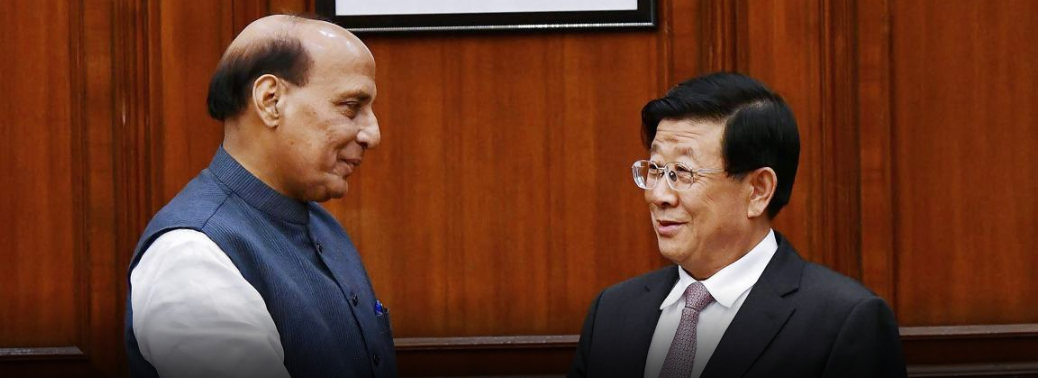
Why in News?
- India and China set the ball rolling on their first high-level meeting on bilateral security cooperation in New Delhi, more than a year after a tense standoff at Doklam between the militaries of the two countries.
About the security pact:
- The meeting, which was co-chaired by home minister Rajnath Singh and
- China’s state councillor and minister of public security Zhao Kezhi,
- discussed issues of bilateral counter-terrorism cooperation and welcomed
- increased cooperation in the area of security cooperation.
- Kezhi is visiting India from 21 to 25 October.
- Singh, however, raised the issue of China repeatedly blocking the proposal to designate Jaish-e-Mohammad (JeM) chief Maulana Masood Azhar as a global terrorist, according to senior home ministry officials.
- Since 2017, China, a veto-wielding permanent member of the Security Council, has blocked bids at the UN by the US, France and Britain to list Azhar as a global terrorist, citing lack of consensus among members of the UN Security Council.
- “An agreement on security cooperation between the ministry of home affairs of India and the ministry of public security of China was also signed by the two ministers. The agreement will strengthen and consolidate discussions and cooperation in the areas of counter-terrorism, organized crimes, drug control and other such relevant areas,” the home ministry said.
- This meeting comes in the wake of Prime Minister Narendra Modi and Chinese President Xi Jinping’s meeting in the Chinese city of Wuhan in April, where they decided on a number of steps to bring down tensions and normalize ties following the Doklam standoff.
- The Wuhan meeting was also followed by meetings between the two leaders on the side-lines of the Shanghai Cooperation Organisation in Qingdao in June and the BRICS leaders’ summit in Johannesburg in July.
- Other than terrorism, India is also keen to discuss the establishment of cooperation between the two countries to tackle transnational crimes and cybercrimes.






